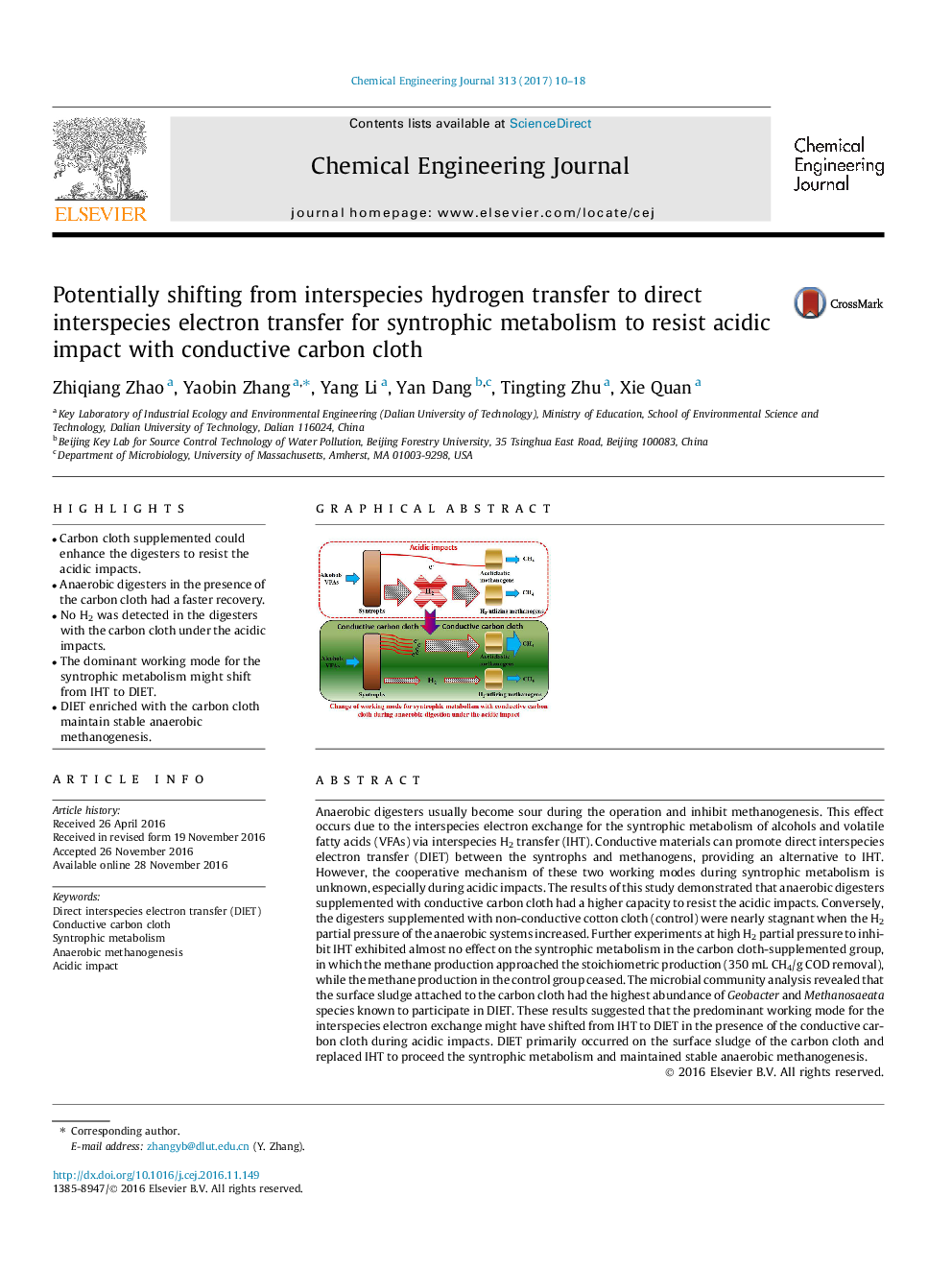| کد مقاله | کد نشریه | سال انتشار | مقاله انگلیسی | نسخه تمام متن |
|---|---|---|---|---|
| 6466527 | 1422965 | 2017 | 9 صفحه PDF | دانلود رایگان |

- Carbon cloth supplemented could enhance the digesters to resist the acidic impacts.
- Anaerobic digesters in the presence of the carbon cloth had a faster recovery.
- No H2 was detected in the digesters with the carbon cloth under the acidic impacts.
- The dominant working mode for the syntrophic metabolism might shift from IHT to DIET.
- DIET enriched with the carbon cloth maintain stable anaerobic methanogenesis.
Anaerobic digesters usually become sour during the operation and inhibit methanogenesis. This effect occurs due to the interspecies electron exchange for the syntrophic metabolism of alcohols and volatile fatty acids (VFAs) via interspecies H2 transfer (IHT). Conductive materials can promote direct interspecies electron transfer (DIET) between the syntrophs and methanogens, providing an alternative to IHT. However, the cooperative mechanism of these two working modes during syntrophic metabolism is unknown, especially during acidic impacts. The results of this study demonstrated that anaerobic digesters supplemented with conductive carbon cloth had a higher capacity to resist the acidic impacts. Conversely, the digesters supplemented with non-conductive cotton cloth (control) were nearly stagnant when the H2 partial pressure of the anaerobic systems increased. Further experiments at high H2 partial pressure to inhibit IHT exhibited almost no effect on the syntrophic metabolism in the carbon cloth-supplemented group, in which the methane production approached the stoichiometric production (350 mL CH4/g COD removal), while the methane production in the control group ceased. The microbial community analysis revealed that the surface sludge attached to the carbon cloth had the highest abundance of Geobacter and Methanosaeata species known to participate in DIET. These results suggested that the predominant working mode for the interspecies electron exchange might have shifted from IHT to DIET in the presence of the conductive carbon cloth during acidic impacts. DIET primarily occurred on the surface sludge of the carbon cloth and replaced IHT to proceed the syntrophic metabolism and maintained stable anaerobic methanogenesis.
107
Journal: Chemical Engineering Journal - Volume 313, 1 April 2017, Pages 10-18